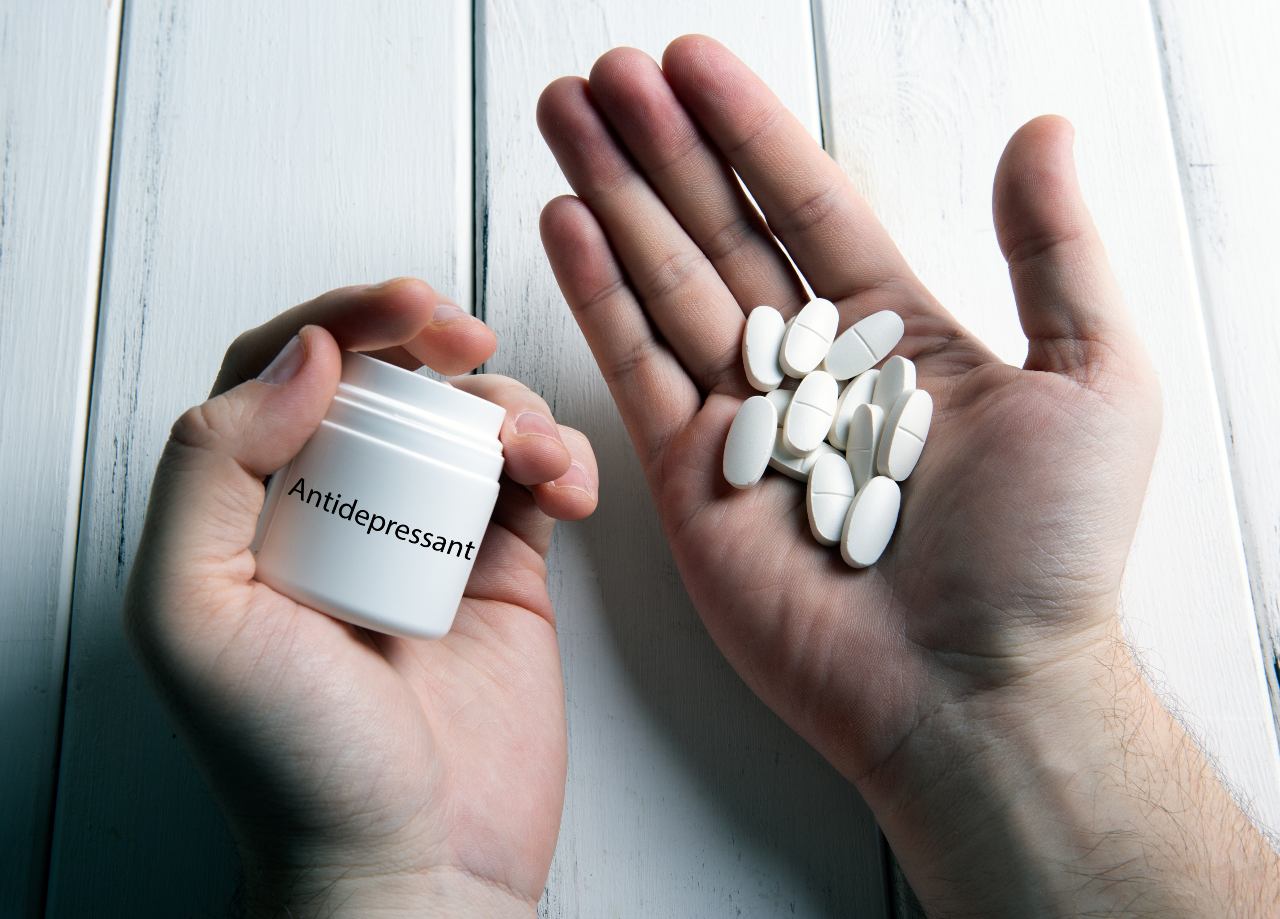Beyond Pills: Unleashing the Brain's Healing Power with TMS for Depression
Hey there! If you're struggling with major depressive disorder (MDD) and feeling like antidepressants just aren't cutting it, you're not alone. But fear not, because there's another option on the table: transcranial magnetic stimulation (TMS). In this post, we're going to dive into what TMS is all about, how it works, and when it might be the right choice for you.
Here at Goolsby and Associates, we know that living with MDD is not fully living at all. We have seen the power of TMS at work within our patients and believe this FDA approved treatment option which is also covered by most insurance plans, is a life-giving tool for those who are not receiving results from their current treatment protocol.

Understanding Antidepressants: The Basics
First things first, let's talk antidepressants. These little pills are like mood superheroes, working to boost levels of key neurotransmitters like serotonin, dopamine, and norepinephrine in your brain. When you're dealing with MDD, it's like there's a traffic jam on the serotonin highway, leaving you feeling stuck in a rut. Antidepressants come in different flavors—SSRIs, SNRIs, TCAs—but they all aim to smooth out those neurotransmitter highways and lift your mood.
The Role of Antidepressants
Enter antidepressants, our trusty sidekicks in the fight against depression. These meds come in different varieties, but they all have one common goal: to ease that serotonin traffic jam. Whether it's SSRIs, SNRIs, or TCAs, they work by either increasing serotonin levels or helping your brain use it more effectively.
Types of Antidepressants
Let's break it down further. SSRIs, like Prozac and Zoloft, are the go-to choice for many folks. They block the reuptake of serotonin, leaving more of it floating around to brighten your mood. SNRIs, such as Cymbalta and Effexor, do a similar job but also target norepinephrine. Then there are tricyclic antidepressants (TCAs), like amitriptyline, which block the reuptake of both serotonin and norepinephrine.
Patience is Key: How Antidepressants Work Over Time
Now, here's the thing: antidepressants aren't miracle workers. They take time to kick in—usually a few weeks to a couple of months. During this time, you might not notice much of a difference, or you might experience some side effects. But hang in there! Once they start working, you'll hopefully notice your mood lifting, your energy levels rising, and those dark clouds in your head clearing up.
Finding the Right Fit
Antidepressants aren't one-size-fits-all, and what works for one person might not work for another. It often takes some trial and error to find the right medication and dosage that works best for you. And even then, they're not a cure-all. They're just one piece of the puzzle when it comes to managing depression.
A Valuable Tool in the Fight Against Depression
Antidepressants may not be perfect, but they're a valuable tool in the fight against depression. By smoothing out those neurotransmitter highways, they give you a fighting chance to reclaim your life. But remember, they're just one part of the equation. Therapy, lifestyle changes, and social support are all crucial components of your mental health journey too. You're not alone in this—you've got this!
When Antidepressants Fall Short
But here's the thing: antidepressants don't work for everyone. Sometimes, despite trying different meds and dosages, you might still find yourself struggling with depression symptoms. That's where TMS comes into play.
What is Transcranial Magnetic Stimulation (TMS)?
TMS is a non-invasive procedure that uses magnetic fields to stimulate nerve cells in the brain. It's like giving your brain a gentle wake-up call, encouraging those neurotransmitters to get back on track. During a TMS session, a coil is placed against your scalp, delivering magnetic pulses to targeted areas of the brain involved in mood regulation.
How Does TMS Work?
The science behind TMS is pretty cool. By stimulating specific areas of the brain—like the dorsolateral prefrontal cortex—TMS helps kickstart neuronal activity and increase the release of neurotransmitters like serotonin. It's like giving your brain a much-needed boost, helping to lift your mood and ease those depressive symptoms.
When to Consider TMS
So, when should you think about TMS as an option? If you've tried multiple antidepressants without much success, or if you're experiencing severe depression symptoms that just won't budge, it might be time to explore TMS. It's FDA-approved for the treatment of MDD in adults who haven't responded well to other treatments, making it a valuable resource for those in need.
What to Expect During TMS Treatment
TMS is typically done as an outpatient procedure, meaning you don't have to stay overnight in the hospital. You'll usually undergo sessions several times a week for a few weeks, with each session lasting around 30 to 60 minutes. And the best part? It's generally well-tolerated, with few side effects compared to other treatments like electroconvulsive therapy (ECT).

Final Thoughts: A Beacon of Hope
In conclusion, transcranial magnetic stimulation offers a ray of hope for those struggling with treatment-resistant depression. When antidepressants aren't enough to lift your spirits, TMS steps in as a safe, effective alternative. So, if you're feeling stuck in a depressive rut, don't hesitate to talk to your healthcare provider about whether TMS might be right for you. Remember, there's always light at the end of the tunnel—you've got this!
If you are suffering from treatment resistant depression and looking for a safe alternative, TMS might just be the answer to your prayers. Goolsby and Associates would love the opportunity to discuss TMS therapy with you and discern if this is a treatment route that may work for you. Please do not hesitate to reach out to our office with any questions you may have.
